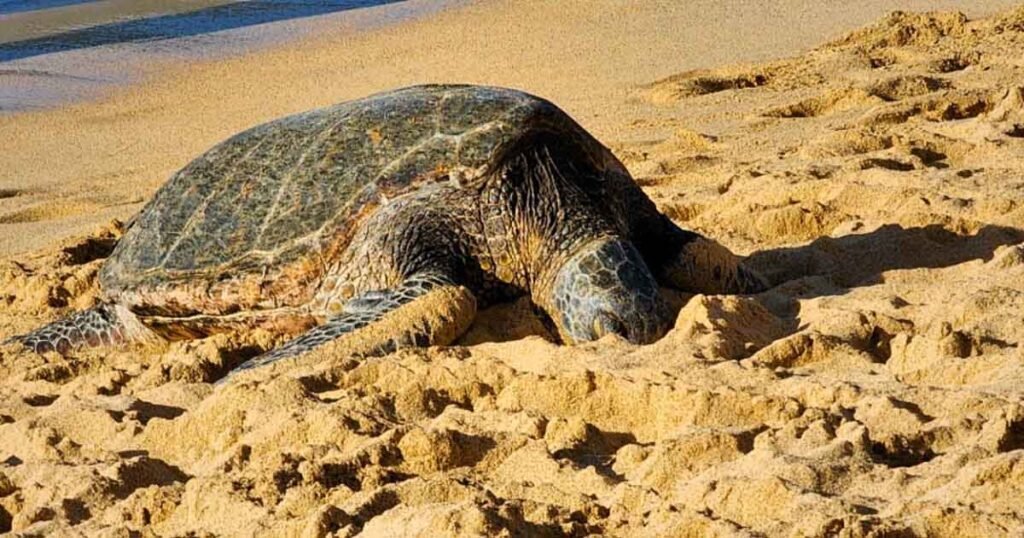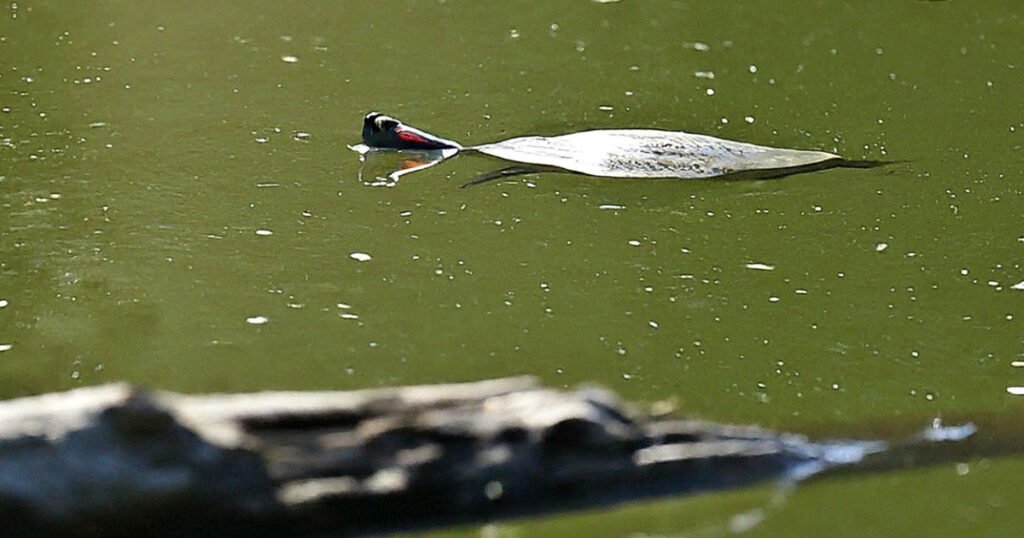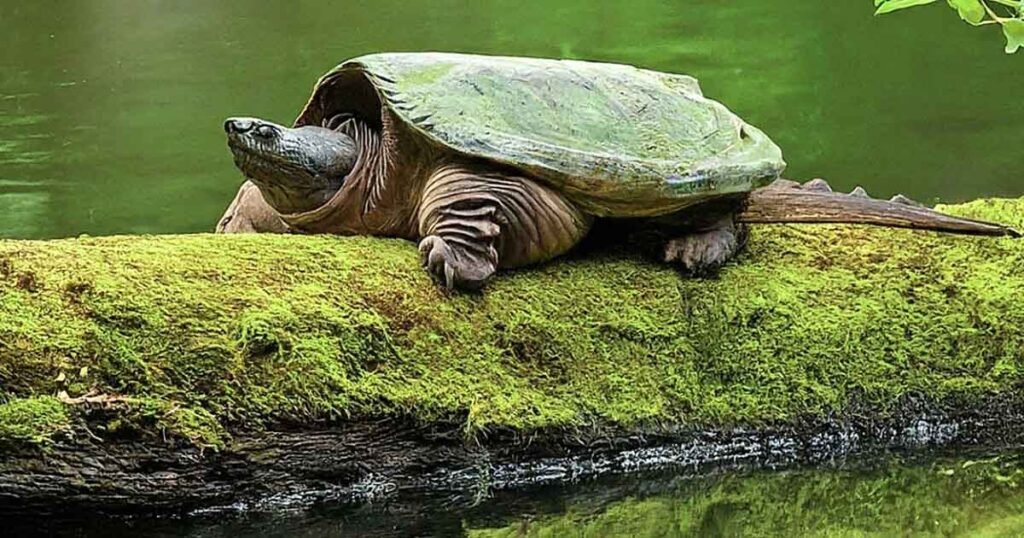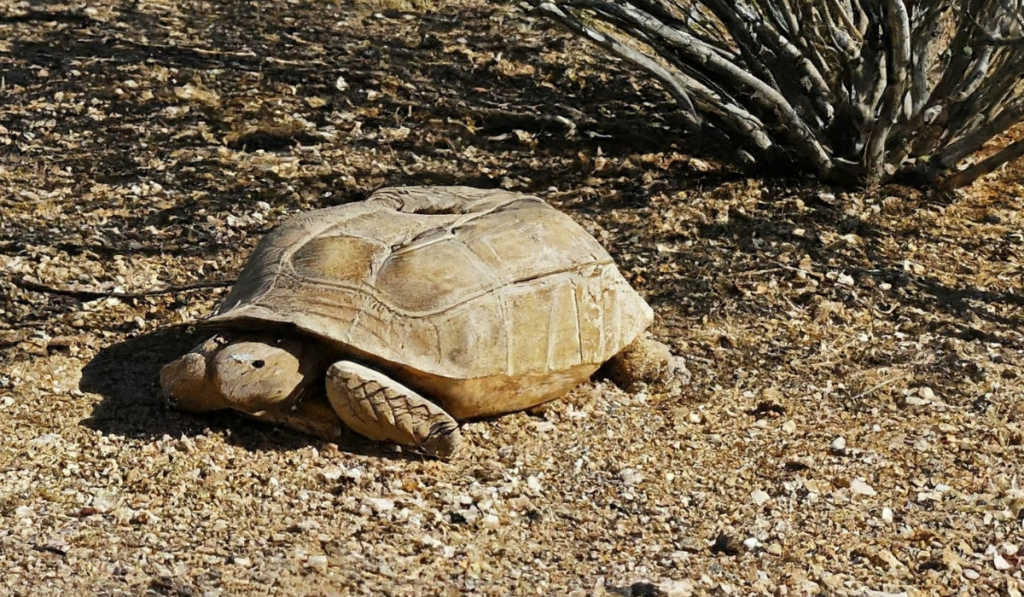Turtles are very intriguing creatures, and one of the most fascinating particular about turtles is they have a long lifespan. Interestingly, there are some turtles or tortoises that can live up to 100 years or above. Even if some turtle species have such a long lifespan, eventually, like any other living creature, they die. As a turtle lover or owner, have you ever noticed a situation like this that made you think about – how to tell if a turtle is dead?
One of the most common and amusing characteristics of turtles is their hibernating feature during winter. During hibernation or resting time, they slow down their activity or even breathing and the situation seems like they do not have life. If you are not experienced, you may feel nervous or think that your turtle may be dead. But the good news is, there are some ways to tell the difference if a turtle is dead or not. In today’s post, we will answer your question in detail – How to tell if a turtle is dead?
How to Tell if a Turtle Is Dead

There’s a difference between a peaceful slumber and something more severe during brumation. The first four points are the most basic bodily checks to find out the severe signs if your turtle is dead or not. Let’s check the signs:
No Movement or Response
A healthy turtle will show some signs of life, even if it’s quiet. To make sure this is the primary step, you should check for their stimulation or movement. You might see them move their toes or peek out from their shell. Also, they might pull back or show signs of moving if you gently touch or poke them. If your turtle hasn’t moved or responded to stimulation for a long time (like 24 hours or more), it’s time for a closer look. Brumating turtles are less active, but they still retain awareness.
Checking the Cloaca
It can be challenging to tell if your turtle is just taking a long nap or something more serious. Here are a couple of ways to see if they’re showing signs of life:
The cloaca is basically your turtle’s “all-in-one” opening at the base of their tail. It’s where their waste, bladder, and reproductive system all empty out.
Remember, you want to see a reaction, not scare your turtle, so be gentle. Locate the tail to find the opening at the base and lightly touch it. Use a soft finger to apply a very light press around this area. When you press or touch in cloaca, any turtle will react in some way because this is the most sensitive area.
Even brumating turtles might try to pull away or twitch their legs. However, if there’s no reaction at all, it could be a sign of trouble.
Check Your Turtle’s Temperature
Turtles are cold-blooded, so they rely on their surroundings to stay warm. It means their body temperature matches their environment. So, here’s the thing – a healthy turtle will feel warm to the touch, even when they’re taking a nap.
Now, this coldness thing can be tricky. See, turtles that are brumating (think of it as a long snooze in winter) will naturally have a lower body temperature. So, just feeling a little cool to the touch doesn’t necessarily mean your turtle has died. However, if your turtle feels extremely cold and stiff, that’s a red flag. In this case, make sure you check for other signs, like unresponsive limbs or no reaction to gentle stimulation.
Bad Smell
This one may be unpleasant, but it’s crucial to know. If you notice a strong, foul odor coming from your turtle’s tank, it could be a sign of trouble. Turtles don’t precisely smell very good, but a sudden and unpleasant odor is a red sign. This smell is caused by the natural process of decomposition, which happens when a living thing has passed away.
Now, these signs are like they will take time to show symptoms. Also, not always are these signs common, but they are crucial to check when you are unsure.
Sunken or Cloudy Eyes
Healthy turtles have bright, alert eyes with clear pupils. However, deceased turtle eyes might look sunken, cloudy, or even dull. Now, sunken eyes can also be a sign of dehydration in turtles, so it’s not a guaranteed indicator of death. But if you notice their eyes looking cloudy or sunken, it’s a good idea to look for the other signs we’ve mentioned. These signs include a lack of movement or a foul odor.
Unblinkingly Open Eyes
Now, another sign is unblinking open eyes. Just like many other animals, dead turtles’ eyes might stay open depending on their position when they die. It’s because the muscles that control the eyelids relax after death and can’t close them again. While open eyes alone aren’t a guaranteed sign your turtle is gone, it’s something to consider along with other symptoms we’ve mentioned.
Warning Signs of Decomposition
If you see any decay on your turtle’s body, that’s another sign. This could include mold, fungus, or a soft, melting body. These are all clear signs that the turtle’s body has stopped functioning and is in the process of breaking down. If you see anything like this, it’s essential to take action immediately.
Unwanted Insects ( Flies and Maggots)
You might see flies around your turtle’s home. It can be scary, but wait! Flies are like little trash cleaners. They like to visit things that are rotting away.
If your turtle is dead and its body is not healthy anymore, flies might come. It means something wrong might be happening. Flies sometimes get on turtles when they’re sleeping deeply (brumating). As a result, their bodies aren’t fighting germs as well.
The important thing is how many flies you see. A healthy turtle should not have many flies around at all. If you know a lot of flies and your turtle isn’t moving, that might mean something is wrong. In this case, you should get help right away.
Spoiled Skin Or Shell
A healthy turtle’s skin should be smooth and not baggy or wrinkly. Its shell, like its armor, should feel firm and not mushy. If the skin looks loose or hollow, or the shell feels rotten and smelly, this could be a sign of trouble. It can happen when a turtle’s body is no longer healthy or functioning. If you see this along with other problems we talked about it’s a negative sign.
Floating or Sinking: Not a Guaranteed Sign

There’s a common belief that dead turtles may float to the surface of the water. While this can happen sometimes, it’s not a guaranteed rule.
When a turtle is dead for a while, gases build up inside. These gases are like tiny balloons, which make the body rise to the top. However, some turtles might sink, especially if they just died or are decomposing.
Just because your turtle is floating or sinking doesn’t necessarily mean they’re dead (or alive!). There are other factors at play.
When you’re worried about your turtle’s health, it’s best to look for other signs, like a bad smell or the lack of movement we discussed earlier.
Remember: Always be gentle when handling your turtle, even if you’re concerned. The goal is to check for signs of life, not stress them further. It’s best to contact your veterinarian as soon as you notice any of these signs. They can assess your turtle and tell you what to do.
Winter Nap Or Hibernation May Confuse Turtles As Dead
Some turtle species take amazing winter naps called hibernation. During this time, they slow down significantly. Their breathing gets quiet, they might not move at all, and they won’t eat for weeks. This can look scary or make them look dead, but it’s natural. If you suspect your turtle is dead, check the above signs. Even if they are moving slowly, don’t panic.
What are The Possible Causes of Turtle Death?

Even though our pet turtles seem harsh in their shells, they can get sick or die, which is natural. Here are some things that could happen.
- Old Age: Turtles get old, too, just like people. When they get older, their bodies might not work as well as they used to. It is a natural part of life.
- Injuries or Sickness: Turtles can bump themselves or get sick sometimes, just like us. If they have a hurt or a sickness, they might not feel like eating or swimming around.
- Dirty Habitat: Turtles like clean homes. If their tank isn’t cleaned or set up right, they can get sick. It can make them feel awful and not make them unhealthy, which can lead to death.
- Wrong Swim: Some turtles, like land turtles, don’t know how to swim well. If they fall into deep water, they might not be able to get out and breathe air. It can make them sleepy forever.
- Not enough food: Turtles need the right food to stay healthy. If they don’t get the vitamins and the right food they need, they might get weaker.
What to Do If a Turtle is Dead

It’s never easy to lose a pet, and turtles are no exception. If you believe your turtle has passed away, here are some simple steps you can follow.
While some signs, like a bad smell or no movement, can be easy to spot, it’s always good to be sure. Review the section on “The Signs To Check If a Turtle Is Dead Or Alive” to confirm.
Once you’re confident, gently remove your turtle from its tank or enclosure. Wrap your turtle in a clean cloth or place them in a sealed plastic bag. There’s no right or wrong way to say goodbye.
You can bury your turtle in a safe spot in your yard (check local regulations). If you do not know what to do, take them to a veterinarian or animal shelter for disposal.
FAQs
What does a dead turtle look like?
A dead turtle might have sunken eyes, unresponsive, loose or discolored skin, and a foul odor. However, it’s essential to consult a vet as hibernation can mimic some signs of death. Don’t hesitate to seek help if you’re worried.
How to tell if a baby box turtle is dead?
Spotting signs of life in a tiny turtle can be tricky. You can check for movement by gentle nudges of their shell or legs. You can also look for a reaction by placing a soft piece of tissue near their nose to see if they breathe. Hibernation can look similar, so consulting a vet if you’re worried is always best!
How to tell if a box turtle is dead?
You can check for box turtles‘ movement if you gently poke their shell or legs or press the cloaca. Place a soft piece of tissue near their nose and see if they can breathe or not. Hibernation can look similar, so consulting a vet if you’re worried is always best.
How to tell if a musk turtle is dead?
Musk turtles are known for hiding and staying still for a long time. If you don’t see any movement, check for other signs. Dead musk turtles might have swollen or discolored bellies or an unpleasant odor. Always consult your vet if you need clarification.
Bottom Line
If you had this question – How to Tell if a Turtle Is Dead? We hope now you have the answers. We talked about how to check if our turtle friends are dead or not. If your turtle isn’t moving, don’t jump to conclusions (especially if they’re a champion napper). In case they have a foul-smelling tummy, no breathing, no movement, sunken eyes, or feel rotten, it’s best to ask a vet.
